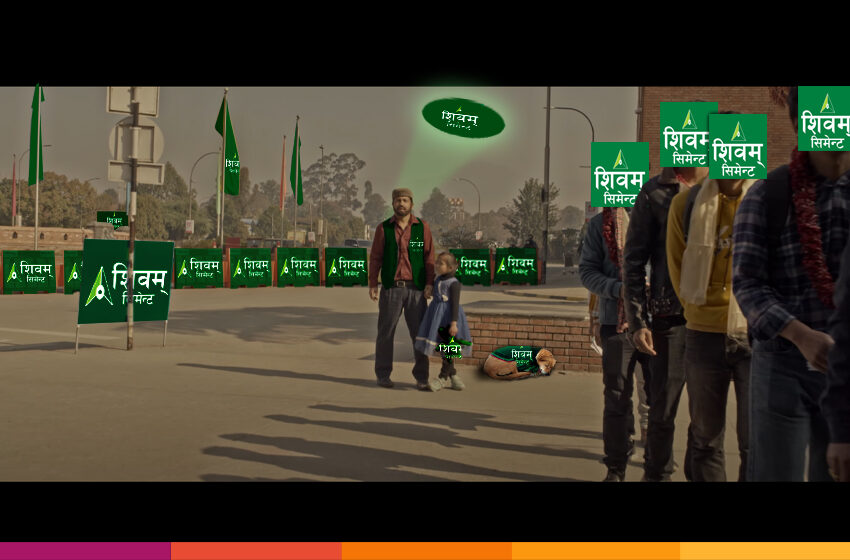
Shivam Cement presents Prakash Saput!
Nepalese people are easily butt-hurt by any form of expression that goes against their ‘jholas’ and values. Prakash Saput’s new music video ‘Pir’ has, thus, generated a new wave of controversy for allegedly portraying female ex-Maoist cadets as resorting to prostitution for sustenance. The debate on whether Prakash Saput’s video portrays the general condition of ex-Maoist cadets is an important topic for discussion.
However, in this article, we argue that Prakash Saput’s new video is not a music video highlighting an important socio-political issue but rather an extended advertorial for brands, especially Shivam Cement.
Just have a look at some of the screenshots from the video:






Now that we have a general idea of the extent of product placement on Prakash Saput’s new video, let us talk about the benefits of this circus:
Helped Prakash Saput pay for content creation
Content creation is an expensive enterprise. Money from these sponsorships helped Prakash Saput bring this story to the consumers with a decent production quality. Without sponsorship, the story would perhaps be limited in budget and scope!
Increased returns for Prakash Saput
It seems we need to take a class on how to make money from arts in Nepal from Prakash Saput. From making sure that his videos cross the 10 minute length in order to jampack as much Youtube adslots as possible to cluttering the video with product placements, we need to take a masterclass from him to learn how to maximize profit for our creative products!
Everyone knows about Shivam Cements
While it is questionable if Prakash Saput’s audience are even potential cement customers, Shivam Cement has made it sure that even a 5 year old will remember its name.
Now that we have talked about the potential benefits about the excessive product placements to respective stakeholders, let us talk about the negative effects:
Interferes with the plot of the video
While a lot of money can be made from product placement, artists’ vision and plot can often get muddled by excessive product placements. A video art, that too with such a sensitive topic like the civil war of Nepal, needs great handling and nuance. Shameless product placements sometimes override the content of the video, for example, people talk more about the excessive product placements in Tom Cruise’s Minority Report movie than the movie itself. Also, from a purely artistic perspective, one of the main goals of the artist should be to let the viewers indulge in the reality created in the screen. Saput’s video on the other hand, while talking about the pain and poverty of ex Maoist cadets, shamelessly superimposes product after product breaking our sense of reality in the video. Ergo, it makes sense for the controversy this particular song has generated, even if Saput’s previous ventures have been known to highlight pressing social issues too.
Behavioral effects of negative product placement
Placing one’s product on a film/video with overriding negative social connotations have been shown to have negative behavioral effect on potential consumer. An important study carried out by University of Madrid found that careful consideration of the intrinsically negative information will discourage the viewers from consuming the brand, especially when they perceive the movie content as being realistic. The fact that Saput’s new video carries a negative sentiment ( perhaps with a sense of realism) is, thus, capable of being disadvantageous to the brands that have placed their products in the video.
This brings us to the most pertinent question! How do brand managers decide where their marketing funds are allocated to? Wouldn’t these brands ( Prabhu Bank, Shivam Cement, Prabhu money transfer) create positive brand image by allocating these funds to CSR activities or a TVC ad instead? Industry veterans, who wish to remain anonymous, claim that there are few nefarious factors at play here. First, it seems that fund allotment is based on a commission structure where content creators pay a commission to the brand managers/ middle-men who secure the sponsorship deal. Second, it seems brands are blackmailed to provide sponsorships or risk a scathing media coverage.
We are not suggesting that these factors were at play in case of Saput’s music video. However, if not, it is even more pathetic. Brand managers and marketing department in general, are one of the backbones of a brand. Haphazardly placing sponsorships on content that has no link to their brand image/story is a terrible waste of a company’s marketing budget. Creating exposure for a brand is one of the vital necessity for a brand, however, it should not come at a cost of being trolled online like Shivam Cement has become. Had the video been about, let’s say, earthquake related devastation and rebuilding a house, Shivam Cement could have made a relevant product placement. However, juxtaposing itself in a controversial and sensitive socio-political issue while continuously flashing the advertisement everywhere displays the height of ineptitude of the marketing department of such an established company!
That said, we at BrandGuff assert the creative freedom that an artist has on his/her art. Thousands have( including the Maoist cadets), literally, shed their blood, sweat and tear so that we Nepalese can express our views without any fear of repercussion. We can have a healthy conversation on whether the video does justice to such a sensitive issue, but being butt-hurt and angry over it defeats the very purpose you all fought for !




